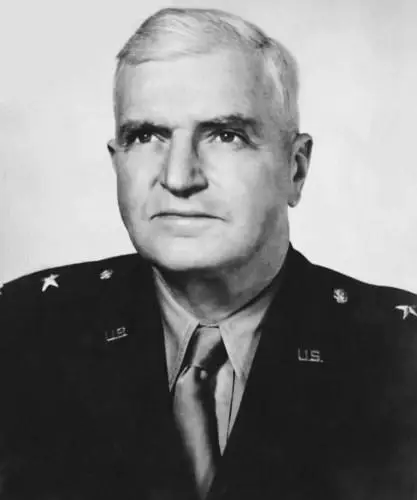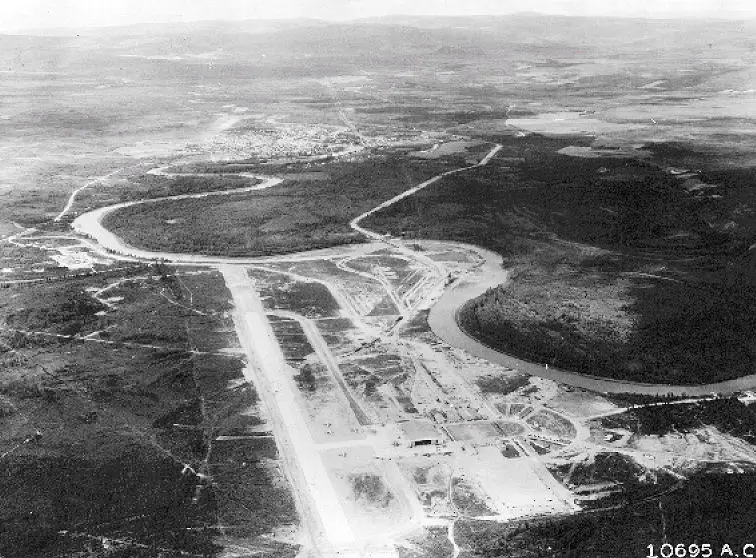By Top War
In a previous article, I talked about the changing plans of the Americans to strengthen the defense of Alaska and create military bases in the region. The American command understood that the peninsula with the adjacent islands was weakly fortified, and if opponents, in particular Japan, captured the territory, they would create a good springboard for themselves and control most of the Pacific Ocean.
The United States took the first step toward implementing its Alaska long-range defense program in August 1939, when construction began on Ladd Field Air Force Base in Fairbanks. Four months earlier, President Roosevelt, by executive order, allocated land near Anchorage for the proposed land base. The Army had hoped that construction of ground and air facilities near Anchorage would begin in the spring of 1940, but the House Appropriations Committee initially rejected the request for funds. The German conquest of the Netherlands and France and the threat of an invasion of England, rather than the Army’s requests, prompted Congress to hastily prepare a revised appropriations bill that included funds for a land base project near Anchorage.
Command
Without waiting for a final decision, General Marshall approved a policy to expand Alaska’s defenses, which provided for the creation of a permanent land garrison of about 2000 men and a temporary emergency garrison of 3100 men. The temporary garrison was to consist of an infantry regiment, a combined field artillery battalion, and an anti-aircraft artillery regiment. General Marshall ordered the first additions to this force—an infantry battalion and a field artillery battalion—to be sent to Anchorage no later than June 30, 1940.
Meanwhile, Congress provisionally approved the establishment of Fort Richardson in Anchorage as the Army’s main headquarters, and construction of ground and air facilities began on June 8, 1940. The first additions to the combat force—21 officers and 732 enlisted men under the command of Lieutenant Colonel Earl Landreth—arrived in Anchorage on June 27.

John DeWitt
Until July 1940, Army posts in Alaska were directly under the Ninth Corps, commanded by General John DeWitt. As a result of the large-scale construction then planned, the planned expansion of both air and ground garrisons, and the development of naval facilities, General DeWitt recommended the appointment of a special commander of forces in Alaska to directly oversee the expansion of defenses. The War Department accepted his proposal, and on July 9, 1940, Colonel Simon B. Buckner, Jr., was appointed commander of the forces. Two weeks later, the new army garrison was renamed the Alaska Defense Force.

Simon Buckner Jr.
In April 1941, the General Staff raised the issue of separating Alaska into a separate department due to the increased size of the garrison and its distance from the continental United States. There were two points of view on this, especially the dispute was about command. General DeWitt strongly opposed the separation of Alaska from the Western Defense Command. He argued that this would make defense of the Pacific Coast more difficult. He wanted all units to obey him. Carl Spaatz, later known for directing the atomic attacks on Japan and then Chief of Staff of the Air Force, opposed General DeWitt and proposed that Alaska be set aside as a separate department. He recommended that the War Department divide the North Pacific Triangle into three parts—the Pacific Coast, Alaska, and Hawaii—and make each part a separate theater of operations. He believed that each commander should bear full responsibility for the ground defense of his sector. But the air defense of all three theaters should be placed under the authority of a single commander. As a result, until 1943, Alaska remained under the command of DeWitt.
Preparing for the defense of the Navy
As the Navy began building air and submarine bases at Sitka, Kodiak Island, and Dutch Harbor, the Army began preliminary planning for their defenses. In August 1940, a defense directive appeared. There the possibility was recognizedsudden aggression against Alaska by Japan or the USSR“, but it was assumed that a land invasion was unlikely. It approved the creation of army garrisons at each of the naval bases, which would consist of an infantry battalion with artillery units at Kodiak and Dutch Harbor and an infantry company at Sitka.
But pretty soon the project in Sitka underwent a complete revision. The overcrowding of the army garrison on two tiny islands has drawn sharp criticism. General DeWitt returned from an inspection of Sitka in May 1941, convinced that building housing on the embankment would lead to dangerous congestion. He requested permission to abandon the project and replace it with the construction of a dam connecting the southernmost part of Japanese Island and Makhnati Island. He argued that the dam could be completed before filling; this would facilitate communication, allow for the dispersion of living quarters and tactical units, provide all-weather access to gun batteries and searchlight positions, and generally give greater elasticity to the defense. In seeking the Navy’s support for the change, he added that the dam would make Whiting Harbor safe and allow a base for naval patrol ships to be established nearby. His recommendation received the support of the navy fleet and was approved by the chief of staff.
At Dutch Harbor, where the Navy began construction of a combined air and submarine station in 1940, initial plans left no room for an Army post on Amaknak Island, where naval construction was concentrated. The army rejected proposals to garrison a nearby island because reconnaissance of the area indicated that Amaknak was the only possible location for a land-based garrison. The Army eventually built Fort Mears in Dutch Harbor…
READ FULL ARTICLE HERE… (en.topwar.ru)
Home | Caravan to Midnight (zutalk.com)






Be First to Comment